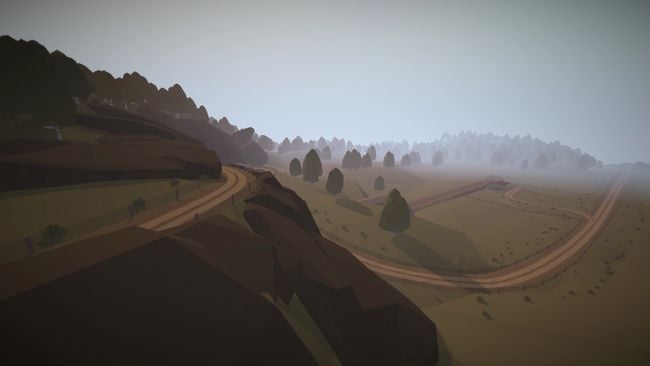Table of Contents Show
A guide to the differences between the different kinds and brands of car parts in Jalopy.
Part Types
To start off with, there are seven engine components: the Engine, Carburetor, Air Filter, Fuel Tank, Ignition Coil, Water Tank, and Battery. Each kind of component has 4 types. These can be straight upgrades to the last, or have some form of downside. Reguardless, there’s usually a type that’s all around the best… if you can afford it.
Engines
There are Stock, Naked, Ramshackle, and Squat engines. Ignoring Ramshackle, each engine is lighter, faster, and more expensive than the previous. Ramshackle engines are strange, as they are extremely light, have average acceleration and the worst top speed, all at the second-highest price. I have no idea what the deal is with these things, but I think they’re supposed to be used when you’re building you car to be as light as possible (for top speed… I think?)
Carburetors
There are Stock, Trough, Pipe, and Tube carburetors. Stock has average weight, the worst efficency, and is cheap. Trough is heavier but more efficent and expensive. Pipe is even more efficent and expensive and is also lighter. Tube has the best stats for everything, but is the most expensive.
Air Filters
There are Stock, Coverless, Stubby, and Can Filters. Each type weighs the same, but they provide better and better engine protection at an increased price as you go up.
Fuel Tanks
There are Stock, Chubby, Portly, and Stout fuel tanks. Each tank holds more, weighs more, and costs more than the last.
Ignition Coils
There are Stock, Barrel, Double Barrel, and Triple Barrel Ignition Coils. They provide faster and more efficent startups, but weigh and cost more as you go up.
Water Tanks
There are Stock, Gazelle, Camel, and Oasis water tanks. There aren’t any sub-types for these, and each new tank is simply 100% better than the previous (i.e. it stores more and weighs the same) though they are still more expensive as you go up.
Batteries
There’s four battery types, though they will all be listed as just “Battery” by the game and they’re all identical. They’re basically just reskins with the different partmaker’s logos and color schemes on them to match fully upgraded engine bays.
Part Sub-Types
For each part type, there are seven sub-types, divided by price-point into the normal, colored, and third party categories.
Normal parts are the least effective, but also the cheapest. Colored parts are more expensive, but offer an improvement to one of the part’s stats. Third party parts (the ones with brand names) are even more expensive, but improve two stats.
Normal parts have no stat improvements over the base stats of that part type. They’re black.
- Green improves performance. They’re green.
- Brown increases durability. They’re brown.
- Red reduces weight. They’re red.
- Krone Kong improves both the performance and durability. They have a two-tone grey and black paint job.
- HSK improves the performance and reduces weight. They are colored white and faded green.
- Carbolyte improves durability and reduces weight. They are black with bright orange highlights.
Each part’s description does a little bit to help explain what it does- Brown parts’ motto, “stability and support” and Krone Kong’s slogan, “Performance you can rely on” stand out as the clearest.
Also note that each improvement is the same for each part- for example the performance improvement of a Green and a Krone Kong is the same, it’s just that Krone Kong also increases durability.
Tires
Tires are similarly handled to parts. There are currently 3 types of tires, each with 3 sub-types (or “compounds”).
Road Tires, Wet Tires, and Off-Road tires function best on roads, in the rain, and off-road, respectively. Fairly self-explanatory.
Each tire type is available in 3 different compounds that exchange traction performance for durability- Soft tires wear fast but are grippier, while Hard tires are durable but not so grippy. Medium is a balance. Also self-explanatory. What isn’t is that the harder compounds cost more than softer ones.
Upgrades
Each of these parts is permanent once installed and never breaks.
- The Bull Bars reduces damage to components during collisions by 50%.
- The Roof Rack doubles your storage capacity for both cargo and spare tires.
- The Mud Flaps reduce the rate at which mud accumulates on your car.
- The Light Rack installs additional lights on your car, providing extra light at the cost of slightly higher power consumption.
- The Digital Dash installs a large electric dashboard gage that tells you important things like when an engine part is damaged or that you are low on fuel.
The Tool Racks are an upgrade that installs a fold-out toolkit in your trunk, giving you a carjack and crowbar that cannot be lost and don’t take cargo space, as well as an unlimited-uses wrench. There are three levels of tool kit, bought sequencially (i.e. you must buy a Level 1 before Level 2s will appear in upgrade shops) that are all identical functionally but will increase the power of the wrench- from a rusty wrench that can repair up to 33% part health, to a steel one with 66% health, to a golden wrench that can fully repair all parts.
